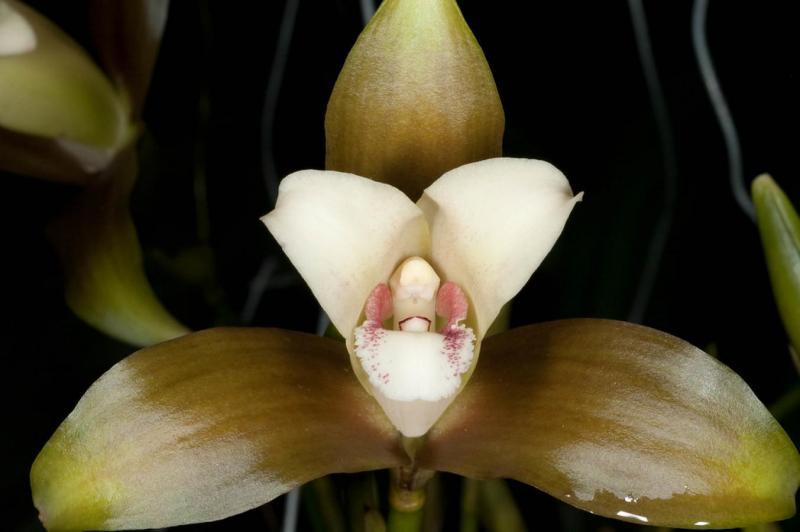Lycaste macrophylla
Also known as: The Large Leaf Lycaste or Lycaste macrophylla ssp. desboisiana h.f. alba Lycaste macrophylla ssp. litensis Lycaste macrophylla h.f. pincelata Lycaste macrophylla h.f. xanthocheila Lycaste macrophylla ssp. macrophylla Lycaste filomenoi Lycaste neglecta Lycaste macrophylla ssp. plana Lycaste macrophylla var. alba Lycaste macrophylla h.v. puntarenasensis Lycaste plana Maxillaria phyllomega Lycaste macrophylla var. plana Lycaste macrophylla ssp. filomenoi in the subfamily: Epidendroideae
Native to: Amazonas - Colombia Amazonas - Peru Departamento del Huila - Colombia Junin - Peru Panama
General Information
The Large Leaf Lycaste is a medium to large sized cool to warm growing epiphytic or terrestrial orchid belonging to the sub family Epidendroideae native to Colombia, Peru and Panama.
Plant Description
Each new growth has numerous lance shaped leaves that grow to 10-75cm long. Pseudobulbs grow to 3-40cm
Flowers
Numerous fragrant blossoms appear
Fragrance
The orchid is fragrant.
Substrate(s)
- Coarse
- Fine
- Bark
- Spaghnum Moss
- Perlite
Care Notes
This orchid goes into a dormancy phase during winter, during this phase it is best not to provide water unless the plant is starting to look thirsty. The lack of water increases the chance of flowering in spring, and also reduces the likelihood of any rot forming. Do not resume watering until new growth has appeared and is growing strongly.
Often a period of intense growth occurs after dormancy. During this time the amount of light, water and fertiliser the plant receives will directly impact the amount of growth that occurs during this time, and in the case of seedlings, will reduce the time required to reach maturity.
It's recommended to heavily reduce the water amount at the middle to end of autumn to trigger dormancy. Leaves on older bulbs will begin to drop during this time while the newer bulbs continue to mature until terminal leaves appear at the tip of the pseudobulbs.
Repotting can be done any time of the year though it's best to do it in early spring when new growth is appearing as this also means new roots will appear to help the plant anchor into the new media and offset any damage to established roots during the repotting process.
Fragrant:
- IsFragrant
Climate
Grows at low to high elevations. Rainfall ranges from 114mm to 632mm per day, heaviest in May and lightest in December. Humidity ranges from 76% to 81%, highest in July and lowest in February. Temperature ranges from 14C to 28C, highest in February (16C to 28C) and lowest in January (14C to 26C).
Watering
These orchids prefer a wet-dry cycle between waterings, they should be watered frequently but only when the moisture is approaching dryness, where the pot feels light and/or the media looks dry. Keep an eye on mounted orchids in warm weather as they may dehydrate quickly.
Fertiliser
dormant-medium-demand-orchid Use balanced fertiliser during Spring and Summer. Apply fertiliser regularly at half strength year round. Use a high Nitrogen fertiliser during Spring and Summer. Use a high Phosphorous fertiliser during Summer.
Potting
This orchid prefers a fine, well draining media. Avoid commercial potting mixes as they may have 'wetting agents' that retain water for too long. A simple mix made up of 20% sand, 50% peat or moss, with the remaining 30% made up of decomposed bark and leaf litter would be adequate. Adding some charcoal to the mix will also help it last longer.
Repotting depends on how wet the media is usually. Every 2-3 years would suffice, or whenever the media shows signs of clumping, staying wet for too long, or smells foul.
Use water retentive media such as moss to prevent roots from drying out quickly This plant does very well in baskets or suspended pots This plant does well mounted to Cork slabs. Repotting is best done annually and in a pot the same size or only slightly larger than the previous one.



















